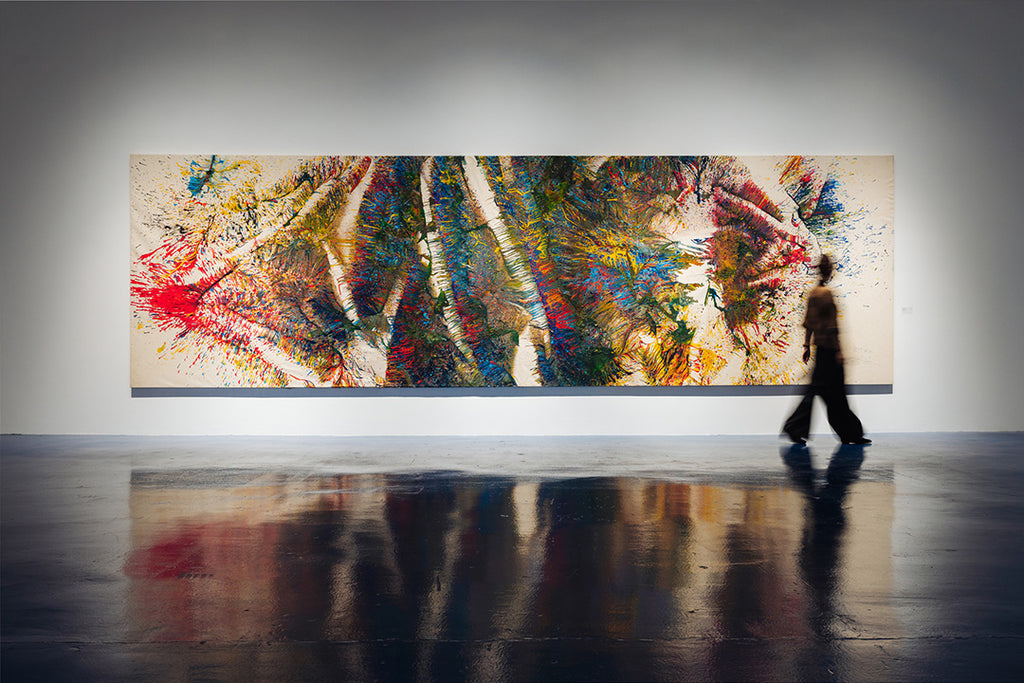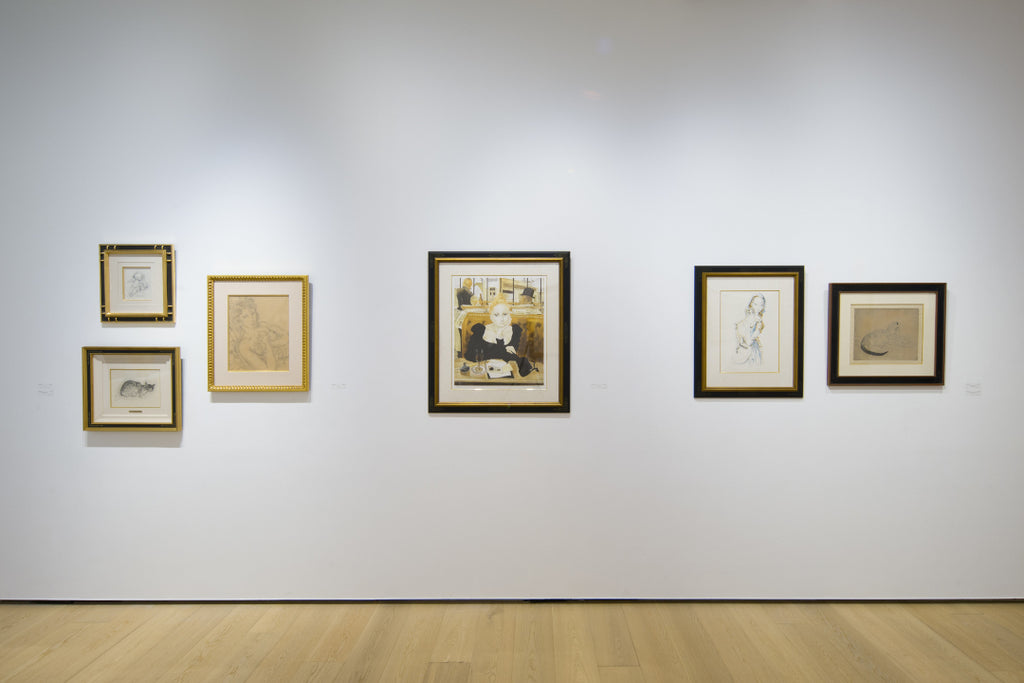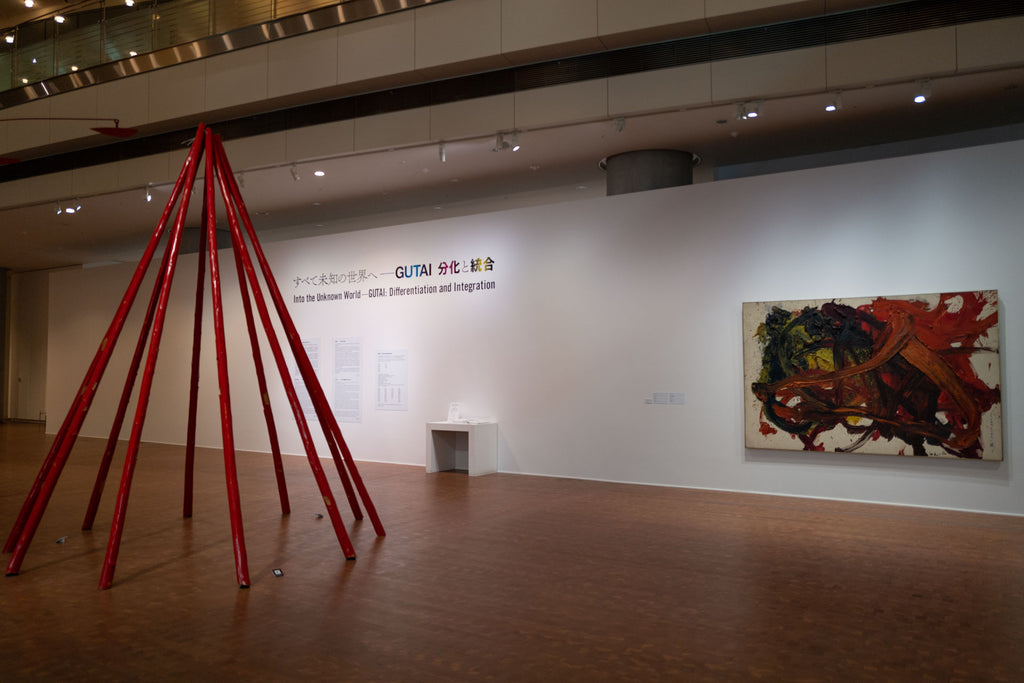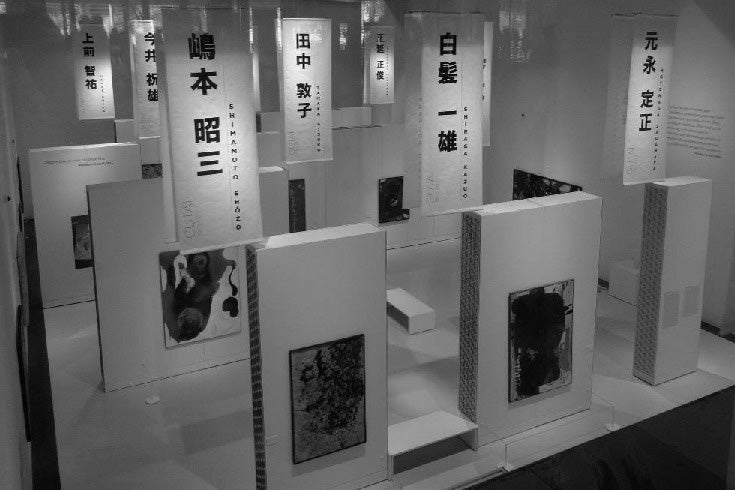ARTICLES
Beyond Gutai: Exhibition Interview with Takesada Matsutani
GUTAI STILL ALIVE 2015 vol.1
14/35
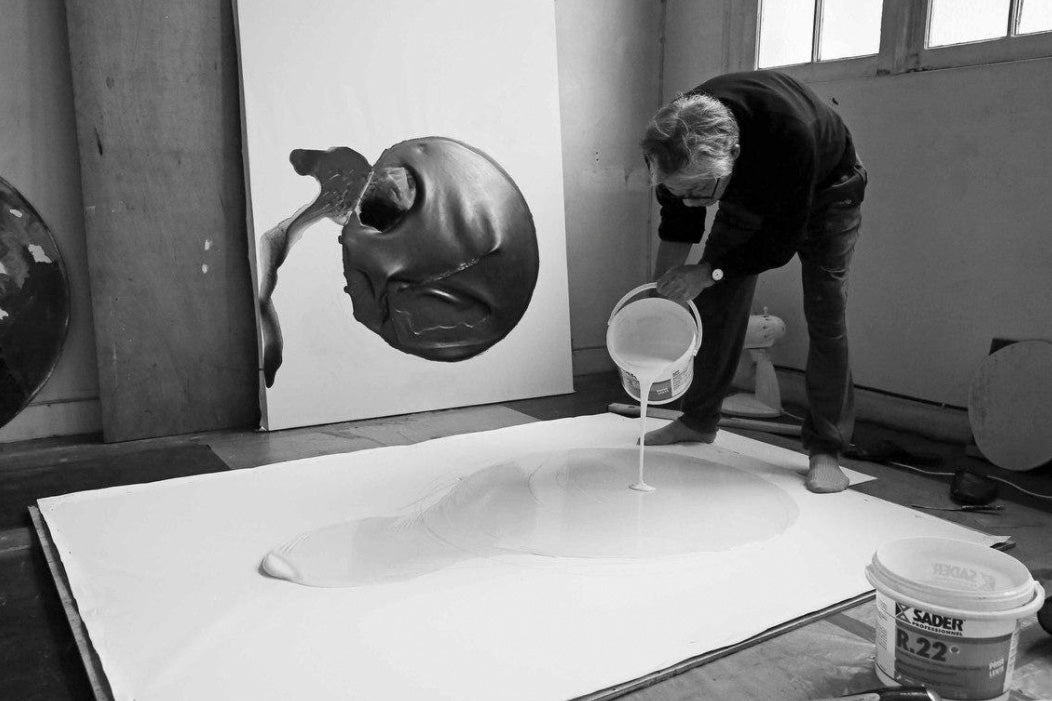
Takesada Matsutani
A project evolving the digitized archive of the book, “GUTAI STILL ALIVE 2015 vol.1”. The 14th edition features an interview with former Gutai Art Association member Takesada Matsutani, known for artworks that make use of vinyl adhesive. In this interview during the Tatsuno Art Project 2012 held in Hyogo Prefecture, he talks about his admission into Gutai and his experiences in Europe.
Matsutani shows his important work made during his Gutai period at shoyugura (a storehouse for soy sauce).
Takesada Matsutani stays and works in Paris as an artist since he went to France to study art in 1966. As a young artist in his twenties before study abroad, he was exhibiting in Gutai, including large unique work using vinyl adhesive -- those that the artist had not voluntarily shown before. But, they were exhibited in "Tatsuno Art Project 2012," Hyogo prefecture, in connection with a place where his large work has been in storage. This interview will introduce readers to the exhibits and the artist coming back from Paris.
Exhibition space in Tatsuno Art Project 2012―Memories of Time, which reminds us of "Gutai Pinacotheca," a base of Gutai Art Association
"Tatsuno Art Project 2012―Memories of Time" was held in Tatsuno city, Hyogo prefecture from November 16 through 25. For this contemporary art project planned to revitalize the city area, Takesada Matsutani was chosen as a special invitational artist. Showcased were a number of his works made in the first half of the 1960s when he was a member of Gutai, a period before his study abroad in Paris. On November 23, 2012, the artist enjoyed a dance performance by dancer Chizuko Kotani, who wanted to dance at the space where Matsutani's work was displayed, and had a gallery talk on his work. While he, coming back from Paris, was very busy, Matsutani gave cooperation in various events with a constant smile on his face.
This exhibition especially featured his work shown in a shoyu storehouse reminding us of a former exhibition space of Gutai Art Association, in which Matsutani exhibited around the first half of the 1960s. Jiro Yoshihara, an artist representing Gutai Art Association formed in 1954, was also the president of Yoshihara Oil Mill, Ltd., a wholesale company of Golden Salad Oil. In 1962 he opened exhibition space called "Gutai Pinacotheca" using plaster-walled storehouse buildings owned by Yoshihara in Nakanoshima, Osaka. It seems that Matsutani's exhibition held at the traditional shoyu storehouse just recalled to mind the project's theme "Memories of Time." Matsutani says that he seemed to remember his good old days through his work and the space. At a place near the exhibition venue, we interviewed with the artist about the days as a member of Gutai.
―This time, the exhibition space is said to be like "Gutai Pinacotheca." Do you have a nostalgic feeling about that?
Matsutani (hereafter referred to as M): The image of this storehouse is certainly like it. I feel nostalgic.
--Were all of these works exhibited in Gutai exhibition?
M: No. I had known about Gutai since I'm from Kansai area. These works were all painted before I met Jiro Yoshihara or when I began to show my work to him around the end of 1959. But, there's no work here that I showed to Yoshihara at that time.
―I think that you belong to the second generation or were a new member of Gutai, one generation younger than its original members.
M: We became a member one generation later. I had known about Gutai when I was a high school student. Those days, because I was ill, I was making nihonga paintings of pets or flowers of which I was taking care. In the days of the postwar period, I was influenced by artists like Kandinsky and interested in art movements through books or anything. This made me want to voice my opinion, and I gradually changed my way of thinking. That's how I arrived at Gutai. In Japanese art scene around the second half of the 1950s, we couldn't find teachers or groups we should aim at but Gutai.―That's why you visited Jiro Yoshihara to show your work.
M: Firstly I showed my work to Sadamasa Motonaga. He was so kind enough to say that my work would be all right and he would introduce me to Yoshihara. Then, I visited Yoshihara to show my work, but I couldn't receive his favorable response for 3 years or so. Yoshihara sees every work and decides on artist's membership in Gutai -- all the things depended on his decision.
―You mean that you were rejected for joining Gutai?
M: Yes. Until 1963 when I started making work using vinyl adhesive, I continued to fail in "the entrance examination" of the group. In that sense, Gutai was severe about the entrance condition.
―Did Yoshihara give you various advices about your work?
M: All that he said was like "Such as this is no good!" At the beginning he said that since there were one week left till next Gutai exhibition, you could show me your work then, so I later came to him to show my work, only failing in receiving his favorable response.
―How many works in total did you take to him?
M: I remember making 10 or so large works to show him.
―Can I say that the more you came to him, the more advices you received from him?
M: If Yoshihara says, "This is no good," that's all. Nothing after that. But, there was no problem with how he judged our work, because he had an excellent aesthetic sense of recognizing artwork. So, I'd wonder how Yoshihara thought of himself or if he was facing a dilemma as an artist or a leader of Gutai. Because I was young and ambitious those days and thought much of meeting someone, I didn’t mind at all coming to him so many times to show my work.
―What made you admire so much Gutai?
M: First of all, because of its enormous energy causing me to hate to lose. Frankly speaking, I was thinking that I'd easily be able to join Gutai. I had a feeling that my work would soon be accepted for Gutai exhibition, but I only failed.
―But, you after all passed the examination with your white work using vinyl adhesive, didn't you?
M: I created the work of that kind after frequent trials and errors in my own way. Since no artists used such a material as woodworking glue sold on the market, I tried pouring vinyl adhesive on the canvas, which I thought would be fine as an art idea. Though I controlled pouring act to some extent, I think that such a work was only a product of the age of coincidence.
―That's how you became a member of Gutai in 1963, and at the 1st Mainichi Art Competition, you received the 1st prize resulting in a grant by the French government to stay in Paris. Thereafter you didn't come back to Gutai, did you?
M: In the middle of the 1960s when I was a member of Gutai, I was feeling that I didn't yet have established myself. I was doing something inspirational and things of chance, and then happened to go to Paris and stay there. In a word, I could say I didn’t see anything objectively. Around that time, Gutai was becoming stereotyped and its members were trying to find something interesting in different opportunities. But, Yoshihara never complained about our exhibiting in other groups. Rather, he was even glad about my winning prize. He must have thought that I would come back soon to Japan after 6 months of study abroad. But, actually, the different environment in Paris or a strange sense of distance in being far away from Japan allowed me to think of myself and my art. Furthermore, as I was then so young, I thought I wanted to know more about Europe. Finding that Europe was totally different from that I knew before, I came to think that I never wanted to spoil the rare chance I got by winning prize and to come back to Japan. Then I wanted to try again to establish myself. But, of course, I had to secure job to make a living. In Paris, I began printmaking -- partly because of living a lonely life in small room in overseas, I thought I could manage somehow or other if I went to the Atelier 17 to work and learn with S.W. Hayter. Just as I expected, I met there various people including Japanese. At the atelier, I found the joy in making prints. In Europe I was able to carry prints I made with me and sell them going around to galleries and leaving my work in their keeping. By doing so, I could earn money for a living, which developed into my carrying carton and traveling to America and other counties. Then again, I started making paintings, including black and white or colorful paintings or works using vinyl adhesive.
―I wonder how your experiences in Gutai were reflected on those paintings.
M: In France artists dig deeply a single subject matter, and make fine works through devoting heart and soul into their work without looking aside. Various retrospectives at art museums there would teach me a lot about that. The artists there create something consistent based on their subject without becoming stereotyped, not simply repeating a single method. Gutai artists, on the other hand, adopted a methodology in which object and spirit happened to be integrated, which made me realize that with such a manner, I could no longer make artwork of my own and that I needed narrative element for my art. Then, I got an idea of my own involving myself into something like sensuality. Gutai artists would employ images in their work, but Yoshihara hated something narrative, especially something political or surrealistic. That's why a lot of Gutai members with a different view from Yoshihara's left the group.
―In a sense, they were the artists aiming at a goal beyond Gutai.
M: The original members of Gutai, whose active period was in the 1950s, concentrated on installation or performance that made a very feature of Gutai. However, we next generation artist, while of course being influenced and inspired by the preceding artists, must go beyond them. Whether we can do so or not depended on our efforts or individual ability. Japan happened to have achieved the economic growth and my work I made as a member of Gutai was collected in art museums, which I admit is not too bad, but such a lucky story has now almost ended. I now live as an active artist, so I think I must substantialize my artistic career even more.
―We hear that this year, you will have a solo exhibition in New York.
M: Yes. A retrospective of Gutai Art Association is to be held at Guggenheim Museum, New York, and at almost the same period, my solo show, composed of 2 parts, featuring my works of black and white made in the 1970s, is to be held at Galerie Richard, New York.
―Currently, Gutai has drawn great attention from American art scene. Do you feel you are busy in connection with the trend? Or, do you feel Gutai art is being recognized there?
M: Things keep me busy. I realize the times are changing -- I hear that a student at the Sorbonne in Paris wrote a thesis on Gutai. Gutai has undoubtedly won certain recognition, retrospectives have been held here and there, and artworks by Gutai artists have been collected by various art museums. It seems to us that Japanese people involved in the art world should have more confidence in the current situation.
―Thank you very much for your time while you are very busy with scheduled art projects. We hope that you will develop your activity even more.
(Mothly Gallery, February 2013)
Read more about the “Gutai Art Association »
*Information in this article is at the time of publication.
